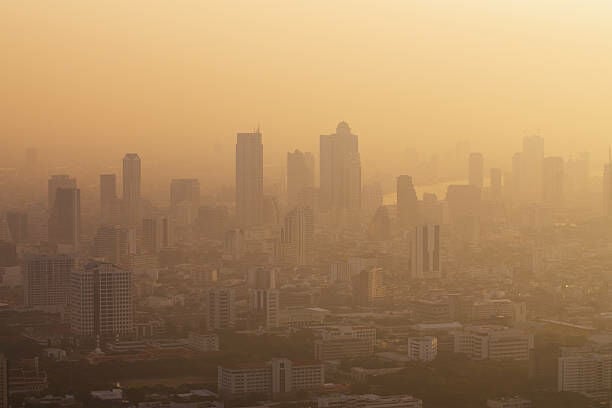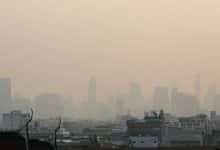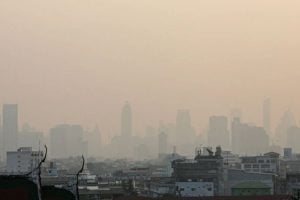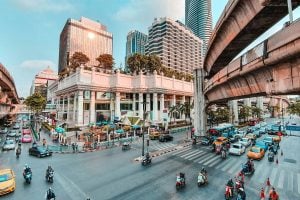Thailand suffers hazardous ultrafine dust levels in 48 provinces

Hazardous levels of ultrafine dust were recorded in 48 of Thailand’s 77 provinces this morning, with the northeast of the country being the most affected. This data was confirmed by the Geo-Informatics and Space Technology Development Agency (GISTDA).
GISTDA’s 10am readings revealed that 13 provinces were under the harmful influence of particulate matter 2.5 micrometres and less in diameter (PM2.5). The PM2.5 levels ranged from 75.8 to 97.7 microgrammes per cubic metre (µg/m³) over the past 24 hours, far exceeding the government’s safe threshold of 37.5 µg/m³ and the World Health Organization’s recommended limit of 25 µg/m³.
Among the most affected provinces were Roi Et, Kalasin, Maha Sarakham, Nong Bua Lam Phu, Mukdahan, Khon Kaen, Yasothon, Chaiyaphum, Udon Thani, Chai Nat, Phetchabun, Amnat Charoen and Ubon Ratchathani. Notably, the majority of these provinces are located in the Northeast region of the country, reported Bangkok Post.
Furthermore, 35 other provinces were dealing with orange (initially unsafe) levels of PM2.5, ranging from 37.9 to 75.0 µg/m³. These provinces, in order of decreasing severity, included Nong Khai, Sukhothai, Nakhon Sawan, Loei, Tak, Sakon Nakhon, Buri Ram, Phitsanulok, Kamphaeng Phet, Uthai Thani, Phayao, Surin, Phichit, Nan, Si Sa Ket, Uttaradit, Phrae, Nakhon Ratchasima, Bueng Kan, Lampang, Chiang Rai, Nakhon Phanom, Lamphun, Sing Buri, Kanchanaburi, Lop Buri, Suphan Buri, Chiang Mai, Ang Thong, Prachin Buri, Phatthalung, Mae Hong Son, Sa Kaeo, Ratchaburi and Saraburi.
Meanwhile, lower Central Plains and southern provinces enjoyed relatively good air quality. Samut Prakan and Bangkok recorded the best air quality, with readings of 15.5µg/m³ and 15.7µg/m³ respectively.
Hotspots identification
Gistda identified 1,320 hotspots across the country yesterday, February 7, with the majority (751) in forested areas and 241 in farmland. Kanchanaburi had the highest number of hotspots at 338, followed by Chaiyaphum with 212 and Nakhon Ratchasima with 77.
Neighbouring countries also reported high numbers of hotspots, with Myanmar detecting 1,059, Laos 407, Cambodia 351 and Vietnam 215.
Prime Minister Srettha Thavisin announced plans to collaborate with his Cambodian counterpart, Hun Manet, to find solutions to the air pollution problem during Manet’s official visit this week. This follows reports that smog from Cambodia has exacerbated the dust pollution in certain areas of Thailand.
In an attempt to alleviate the dust levels, Natural Resources and Environment Minister Patcharawat Wongsuwan has instructed the Pollution Control Department to collaborate with the Department of Royal Rainmaking and Agricultural Aviation in initiating rain-making operations.
Bangkok Governor, Chadchart Sittipunt has drawn attention to the role of farmers in the PM2.5 issue, as they often resort to stubble burning due to their inability to afford machines that would eliminate the need for such practices.
Latest Thailand News
Follow The Thaiger on Google News:


























